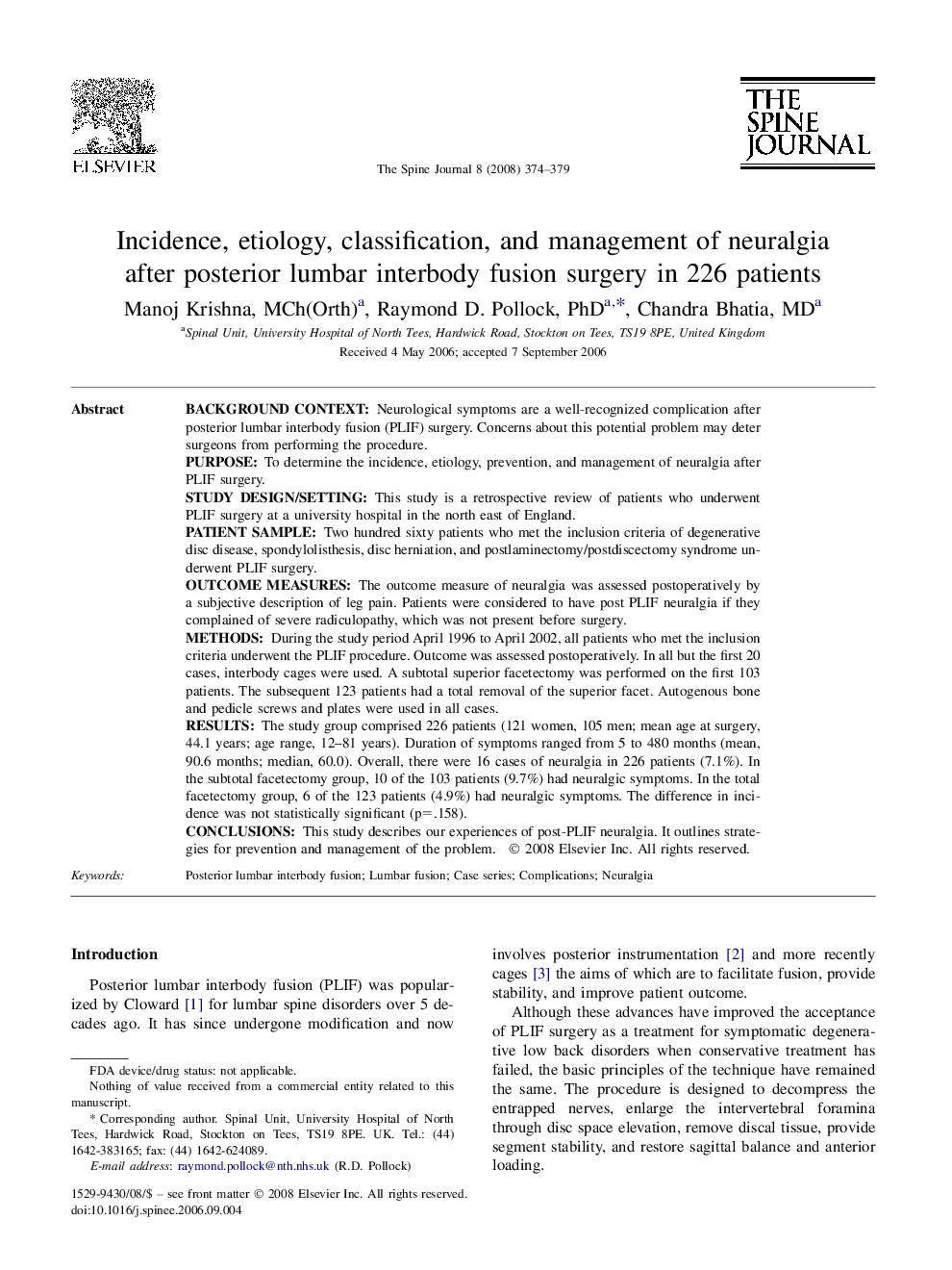| Article ID | Journal | Published Year | Pages | File Type |
|---|---|---|---|---|
| 4099343 | The Spine Journal | 2008 | 6 Pages |
Background contextNeurological symptoms are a well-recognized complication after posterior lumbar interbody fusion (PLIF) surgery. Concerns about this potential problem may deter surgeons from performing the procedure.PurposeTo determine the incidence, etiology, prevention, and management of neuralgia after PLIF surgery.Study design/settingThis study is a retrospective review of patients who underwent PLIF surgery at a university hospital in the north east of England.Patient sampleTwo hundred sixty patients who met the inclusion criteria of degenerative disc disease, spondylolisthesis, disc herniation, and postlaminectomy/postdiscectomy syndrome underwent PLIF surgery.Outcome measuresThe outcome measure of neuralgia was assessed postoperatively by a subjective description of leg pain. Patients were considered to have post PLIF neuralgia if they complained of severe radiculopathy, which was not present before surgery.MethodsDuring the study period April 1996 to April 2002, all patients who met the inclusion criteria underwent the PLIF procedure. Outcome was assessed postoperatively. In all but the first 20 cases, interbody cages were used. A subtotal superior facetectomy was performed on the first 103 patients. The subsequent 123 patients had a total removal of the superior facet. Autogenous bone and pedicle screws and plates were used in all cases.ResultsThe study group comprised 226 patients (121 women, 105 men; mean age at surgery, 44.1 years; age range, 12–81 years). Duration of symptoms ranged from 5 to 480 months (mean, 90.6 months; median, 60.0). Overall, there were 16 cases of neuralgia in 226 patients (7.1%). In the subtotal facetectomy group, 10 of the 103 patients (9.7%) had neuralgic symptoms. In the total facetectomy group, 6 of the 123 patients (4.9%) had neuralgic symptoms. The difference in incidence was not statistically significant (p=.158).ConclusionsThis study describes our experiences of post-PLIF neuralgia. It outlines strategies for prevention and management of the problem.
